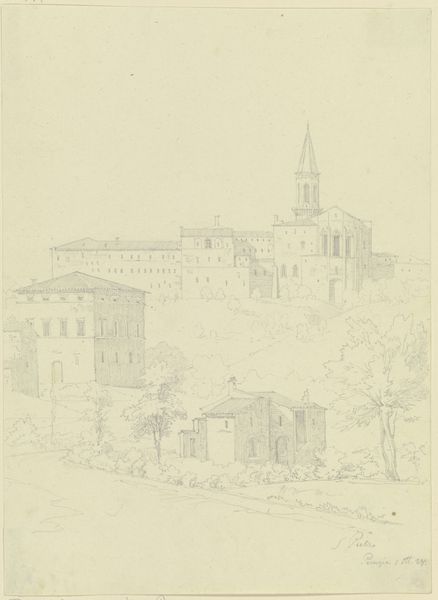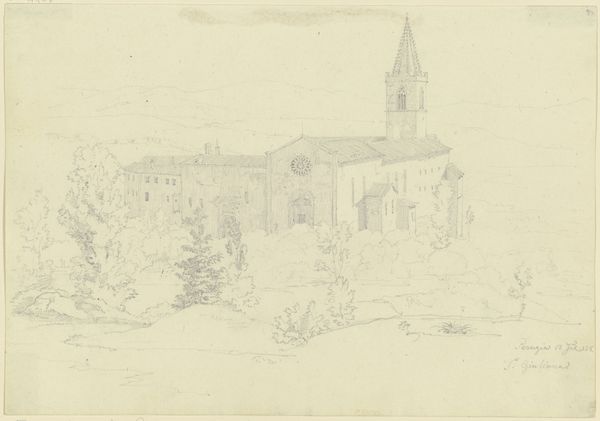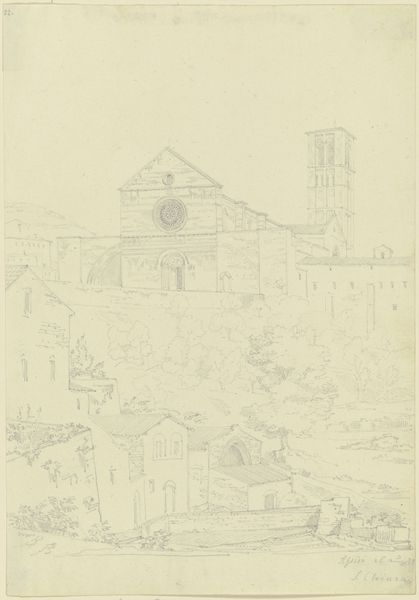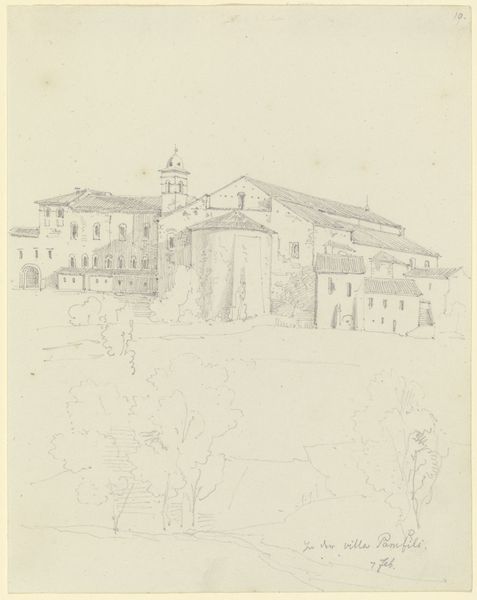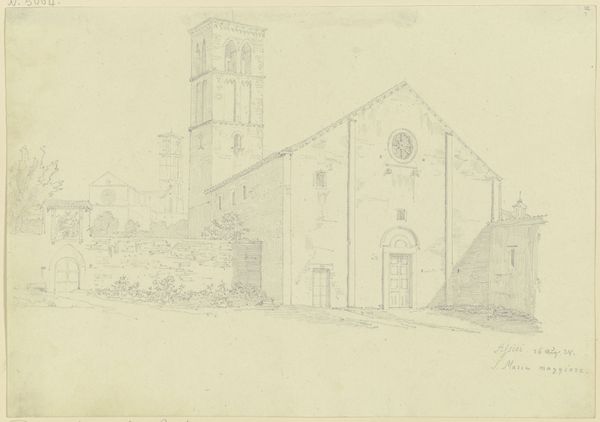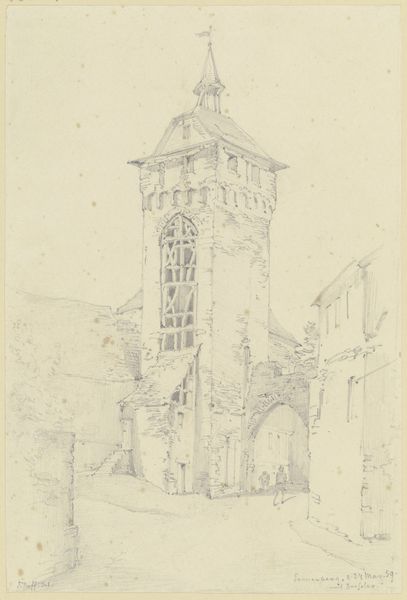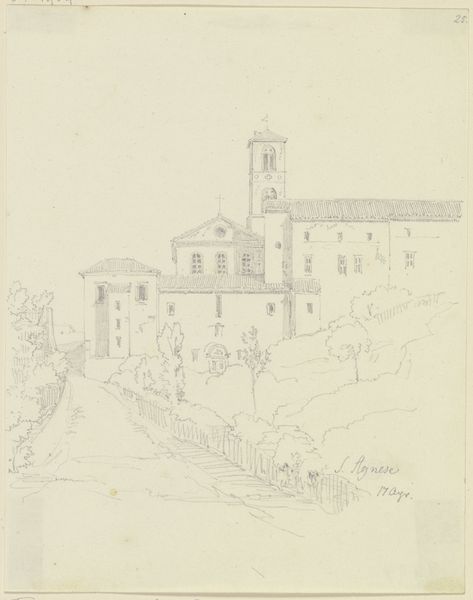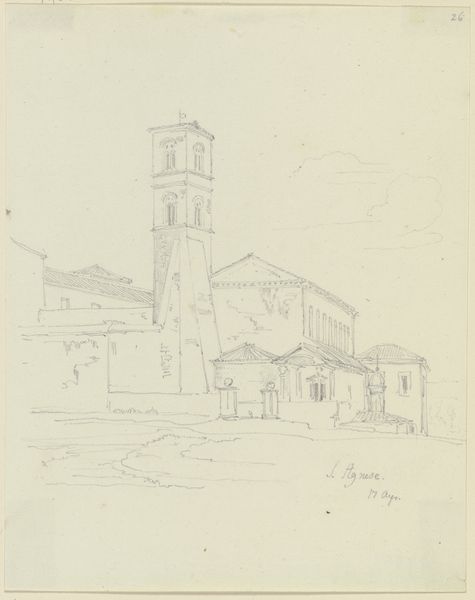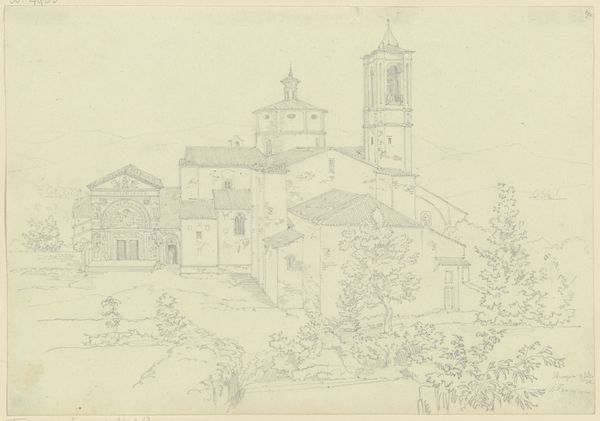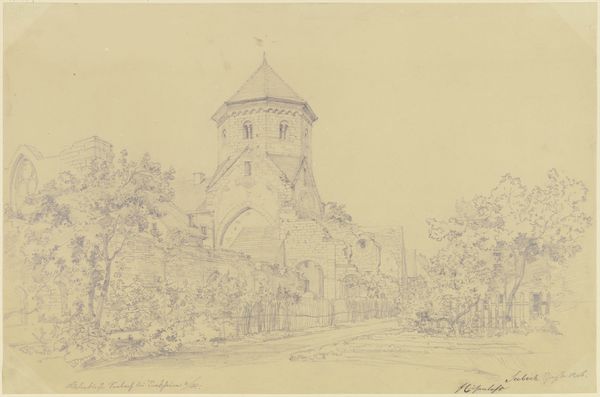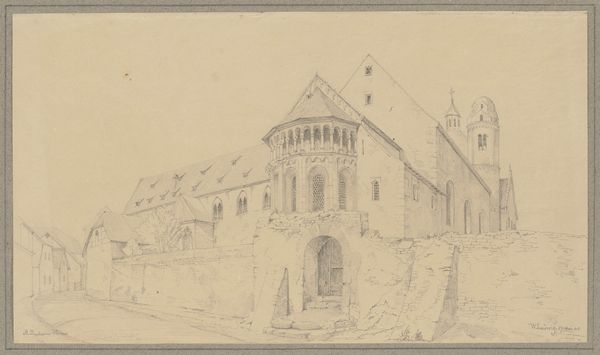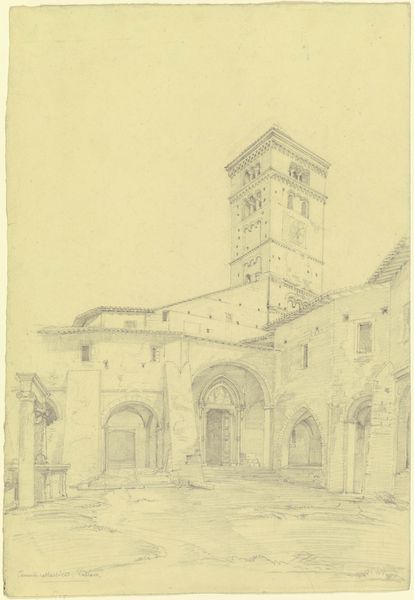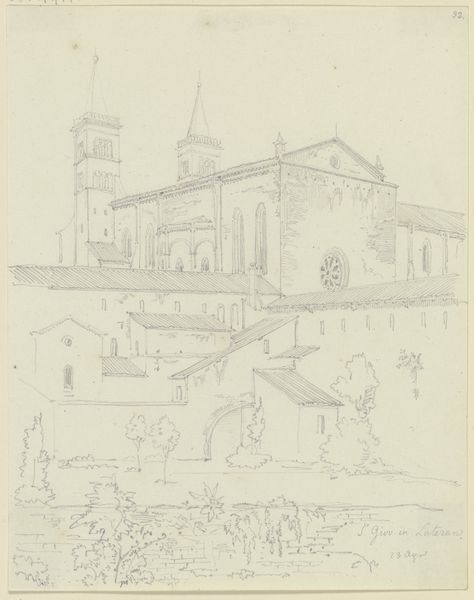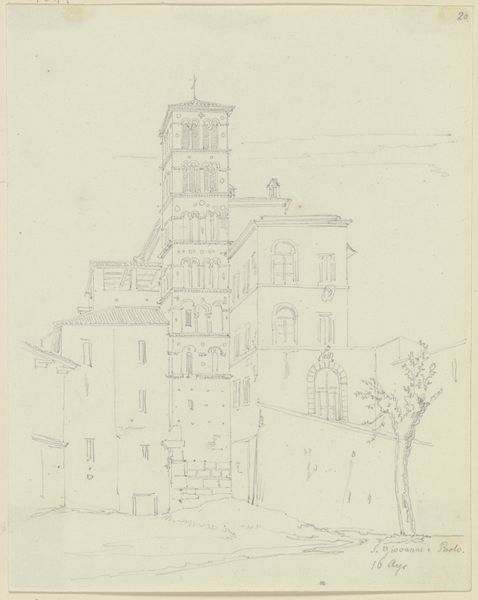
drawing, pencil, pen, architecture
#
drawing
#
16_19th-century
#
pen sketch
#
landscape
#
etching
#
personal sketchbook
#
pencil
#
pen
#
italian-renaissance
#
architecture
Copyright: Public Domain
Curator: Looking at Friedrich Maximilian Hessemer’s delicate pencil and pen drawing, dating from August 1828, you immediately sense the airy lightness, almost like a dream. There is an atmospheric haziness softening the architectural details, rendering it less of a study and more of an evocative vision. Editor: Indeed. What strikes me is how this depiction, "S. Guiliana in Perugia," offers a peek into the Romantic era’s architectural gaze. Note how the building dominates the gentle hill, but remains gracefully embedded within the landscape, a powerful but serene image of socio-cultural stability. Curator: Absolutely. And if you consider what Guiliana represents – purity, piety, even defiance against social constraints – you see those themes mirrored in the image. The sturdy architecture symbolizes resistance, yet the ethereal treatment also gives a feeling of spiritual elevation. Even the positioning, set above and apart from the everyday, reinforces her elevated, saintly status. Editor: A cultural projection for its time? I wonder how Hessemer perceived the public function of such spaces, the stories they tell, and whose history they prioritized? This image reminds me how 19th century artists viewed architecture as vessels of collective memory and power. Curator: Perhaps, yes, Hessemer emphasizes not simply architectural accuracy, but emotional resonance, tapping into a symbolic architecture imbued with the ideals of serenity, spirituality, and history – themes still alive today. The hazy details suggest the blurred line between material and ethereal spaces. Editor: This drawing, a sketch really, does indeed open an avenue into viewing not only a single structure, but a microcosm of the beliefs and values of its time. It serves as a potent reminder of how structures embed societal narratives. Curator: I agree, it provides a fascinating glimpse into our cultural past and enduring aesthetic sentiments. Editor: And a pertinent reminder that even seemingly simple sketches offer us complex histories.
Comments
No comments
Be the first to comment and join the conversation on the ultimate creative platform.
